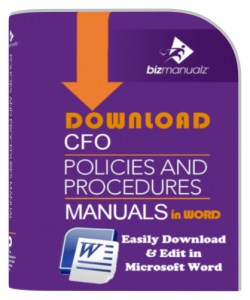Automating Finances Should Be a Part of Your Management Overhaul

Automation tools are used to improve efficiency, productivity, and overall performance throughout a company. Using these tools to drive a seamless operation is steadily rising as one of the most popular business strategies for business process improvement. That is why automating finances should be a part of your management overhaul.
Make Automating Finances Be a Part of Your Management Overhaul
Automating business processes results in saved money, error reduction, better customer service, and increased employee satisfaction to start. One of the CFO responsibilities should be to consider the impact of automating the financial operations. These automation tools extend to certain financial aspects of any company, making mundane, repetitive money-related tasks that much more navigable.
The Advantages of Automating Finances
Suppose you’re doing an audit of your business processes and procedures to identify any opportunities for better efficiency and productivity. In that case, there is potential in automating specific financial aspects of your company. Here are three advantages and three disadvantages of financial automation and how to make the right decision for your business.
Automating Finances Saves Time
Two of the most time-consuming financial responsibilities for business owners are paying bills and processing payroll. Each of these tasks can be automated to some degree, if not wholly, saving you time and allotting the energy that would’ve been used to other deserving tasks. You can also automate other core bookkeeping, invoicing, accounts payable and receivable, tax reporting, and expense management. Automating financial processes like these gives you more time for projects and responsibilities directly related to growing your company and maintaining a healthy workplace.
Mitigates Financial Stress
Automating certain parts of your finances and automating notifications that come with these financial tools and services can help you mitigate an element of stress related to finances. Automation tools can tell you if payments are processed successfully, whether the financial obligation could be met, and track transactions in real-time. When something isn’t right, you’re immediately notified and can fix an error promptly, add money to an account, or swiftly notify any person affected by financial oversights.
Easier Set Up
Modern IT tools can improve business intelligence and financial processes. Automation tools and software for finances are usually simple to set up, or a support person can walk you through exactly how to navigate and use them. In addition to a simple setup and designated support person or team, automation tools are usually easy to manage and provide many resources to tap should you have any questions. You’ll receive system updates, user notifications, and constant guidance from experts throughout the length of your use.
The Disadvantages of Automating Finances
When doing a complete overhaul of how you manage your business finances, automation should only be considered If it makes sense financially, time, and effort-wise. You should also answer the question: will this make things like compliance easier, as well as financial reporting and daily management?
You Can Set It, but You Can’t Forget It
Just because you can set up specific financial tasks for automation doesn’t mean that they don’t need to be monitored and managed. The process of managing working capital, paying bills, or sending a direct deposit to an employee is automatically prompted, but any requested changes are not. You should also be checking automated financial tasks regularly to ensure everything is being processed accurately and efficiently.
Changes Are a Hassle 
Changes are sure to come at some point in your financial processes. Everything from updating a credit card number for a bill, changing an account number for an employee’s direct deposit, updating allocated savings amounts or 401K contributions, or changing an address attached to your financial accounts, can be a bit of a hassle to complete. If you’re not adept at navigating automation tools, trying to make a change can be incredibly frustrating and a complete turnoff for using these tools in the future.
Only Certain Financial Aspects Can be Automated
You can only automate certain financial aspects of your business. So, it can seem pointless to some business owners with an “all or nothing” mentality. If you can’t automate everything, why automate anything at all? If you have a well-oiled system for everything financial, it may not be worth the time and effort to learn new tools, especially if they don’t ease the tasks that count.
To Automate or Not to Automate?
The point of automating certain financial processes in your business is to simplify those processes and leave more time for the things that can’t be automated. If you’ve taken a thorough look at a transition to an automation tool and it just doesn’t align with your operation, it’s okay not to move forward. 
If your decision is in limbo for too long, hiring a professional to thoroughly explore whether this shift is right for your business could be the way to go. An information systems professional is knowledgeable in the basic concepts of programming, database management, networks, systems analysis, and IS security. They can analyze your financial systems, software, and management processes to help you determine if automating your finances is right for your business.















Leave a Reply